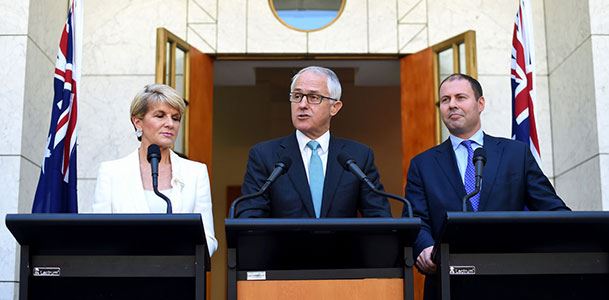Australia’s government has announced that it is to ratify the Paris climate agreement, which was struck 11 months ago and entered into force last Friday.
The move comes despite the election of Donald Trump, who has called climate change a Chinese-inspired hoax. Trump has pledged to turn his back on the Paris treaty after he takes office in January, although this would take at least a year and technically leave the Agreement still in force, albeit weakened.
The question for Australia is how Canberra will react to such a seismic shift in US climate policy. The last time a US president pulled the plug on international climate negotiations was in March 2001, when George W. Bush withdrew from the Kyoto treaty. Australia’s prime minister John Howard followed suit on Earth Day 2002.
The temptation for Australia’s current government would be to follow in Trump’s slipstream in much the same way. Despite its 2030 climate target being widely seen as unambitious, Australia still lacks a credible plan to deliver the necessary emissions cuts, and has no renewable energy target beyond 2020.
While Prime Minister Malcolm Turnbull may be a vocal supporter of climate action, not everyone on on his side of politics is as keen – such as MPs Craig Kelly and George Christensen. (It was not always thus under the Liberals.)
The temptation to defect might be strong, but the countervailing pressure will be much stronger that it was in 2002, and the clean energy transition is already underway. Just this week, a high-powered group of business leaders, energy providers, academics and financiers called on Turnbull to expand the renewable energy target and create a market mechanism to phase out coal.
Yet the US election has also reinvigorated Australian opponents of climate action, such as One Nation senators Pauline Hanson and Malcolm Roberts, who were cracking champagneat the prospect of Trump in the White House, and media commentator Andrew Bolt, who jubilantly described Trump’s victory as a “revolt against the left’s arroganceâ€Â.
Which bit of history will repeat?
On balance, then, it is still hard to predict Australia’s next move – and past form is little guide for future performance.
Over the past 26 years, Australia has made two largely symbolic commitments to international climate action, and one very concrete refusal.
In 1990, ahead of the 2nd World Climate Conference which fired the starting gun for the United Nations’ climate negotiations, the Hawke government announced a target of a 20% reduction by 2005.
The pledge, however, was laced with crucial caveats, like this one:
…the Government will not proceed with measures which have net adverse economic impacts nationally or on Australia’s trade competitiveness in the absence of similar action by major greenhouse-gas-producing countries.
This target was sidelined in the final United Nations Framework Convention on Climate Change, which Australia signed and ratified in 1992.
In 1997, Australia got a very sweet deal at the Kyoto climate talks, successfully negotiating an 8% increase in greenhouse gases as its emissions “reduction†target, as well as a special loophole that allowed it take account of its large reduction in land clearing since 1990. Australia signed the deal in April 1998, but never ratified it.
Kyoto’s rules hid a multitude of sins, anyway, as Oxford University’s Nicholas Howarth and Andrew Foxall have pointed out:
…its accounting rules obscure the real level of carbon emissions and structural trends at the nation-state level… it has shifted focus away from Australia as the world’s largest coal exporter towards China, its primary customer.
Although Kevin Rudd famously ratified Kyoto and received a standing ovation at the Bali Climate summit in 2007, a stronger Australian emissions reduction target was not forthcoming.
The next big moment came at the Paris negotiations of 2015. Australia’s official pledge was a 26-28% reduction on 2005 levels by 2030 – a target unveiled by the former prime minister Tony Abbott, and which met with a lukewarm response from analysts.
Since then, pressure has been building for Australia to explain how it can meet even that target, given the hostility to renewable energy among the federal government, the lack of a post-2020 renewables target, and the inadequacy of the current Direct Action policy.
And now we are looking at the prospect of a Trump presidency, already described as “a turning point in the history of climate action†and “the end of any serious hope of limiting climate change to 2 degreesâ€Â.
In a chaotic world that has confounded pollsters, it seems foolish to bet on anything. But two predictions seem sure: atmospheric concentrations of carbon dioxide will rise, and the future will be … interesting.










